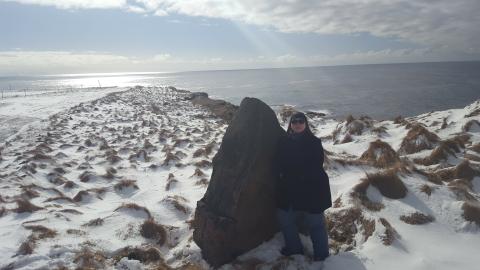
E IS FOR EVIL had a book birthday today! This instalment of the ALPHABET ANTHOLOGIES series contains my story "H is for Hindsight/He Who Steals the Sun Shall Bear its Gravity."

This semester I opted to complete a pedagogical project for my Music 7007: Race Gender and Class course in lieu of writing a traditional term paper.
I will bloom in the autumn,
When the sun is fat and golden,
And the night is not quite cool.
My petals will uncurl
On a too-warm evening
Still clinging to daylight.
My perfume will be heady;
Crushed juniper needles,
Home-bottled rosehip syrup,
Wind over canyon stone,
And that blossom, full and redolent,
May yet become fruit.
Watch for a late harvest, easy to gather
From a hardy, thornless vine
On the last cold days before the frost.
- C.S. MacCath


This semester, I'll be writing a paper on performance theory, activism, and scholarship using the work of a few well-known activist scholars but primarily that of Dwight Conquergood.
During Yuletide, I made a set of runes using birch wood I brought back from Iceland in April of last year. Because I'm a folklorist, I thought it might be interesting to document the process in pictures and share them with you.

2017 was incubative for me. Nearly all of my energy was spent on the two semesters of graduate school I completed, which required a level of engagement I'm not certain I could adequately describe if pressed.
There’s a reason I use the word “fuck.” I was raised without the word and several others like it by conservative, religious parents and a grandmother who said “h-e-double-hockey-sticks” when she meant “hell.”

Went for a drive on this blue and gold autumn day with a bag of Sugar Mama's cookies in the car. Passed a flock of about a hundred crows and stopped beneath them on my way back.
You are the Kintsugi of our fragments,
Golden Joiner, come and mend what has broken.
To the liberal transgender woman and the blue collar conservative, come.
To the factory farmer and the cow, come.
To me and to those for whom I have enmity, come.
To all who do not want to heal, who cannot find the way, come.

Sean took this gorgeous photo here in Cape Breton a couple of days ago, and I thought it would make a good visual image for a post about the end of summer.